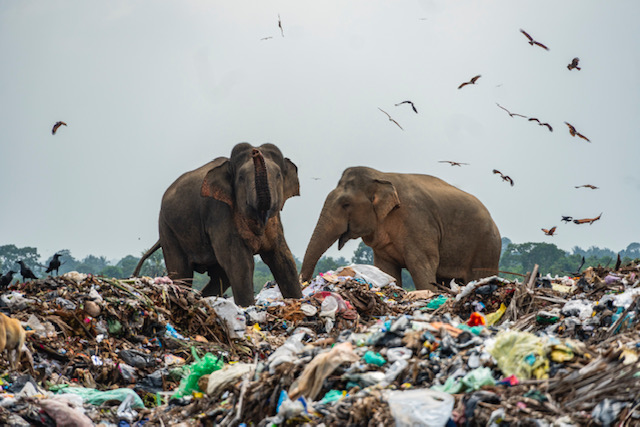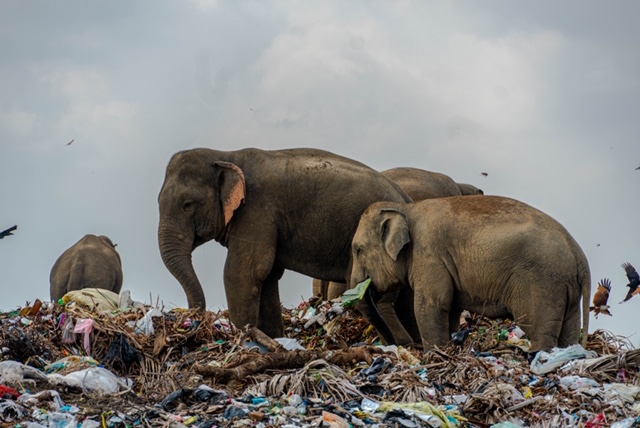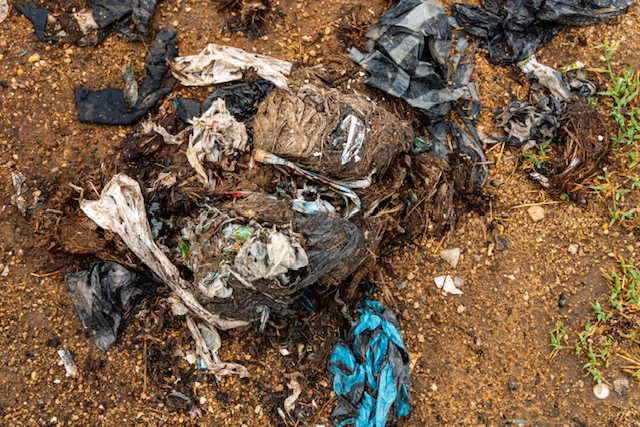While elephants are under threat all over the world, elephants in the North-East have come under increased threat due to improper waste management.
Photographs by Tharmapalan Tilaxan, the winner of this year’s Royal Society of Biology photography competition.
Recent photographs by Jaffna-based photographer Tharmapalan Tilaxan, captured a wild herd rummaging through a garbage mound in the Amparai district in the Eastern province of Sri Lanka, which encroaches on the elephant’s habitat, posing a serious threat to their wellbeing.
Rubbish from neighbouring towns, including Sammanthurai, Kalmunai, Karaitheevu and Alayadivembu, have been dumped near Ashraf Nagar, which borders the Oluvil Pallakkadu area, where the elephants roam freely.
The elephants have become so accustomed to foraging through the mound for food and ingesting plastics, that they now wait for trucks to unload waste into the dump. This has already led to the death of six elephants. Post-mortem reports recovered polythene and plastics in their stomachs.
Without the proper infrastructure in place to dispose of waste, it has become easier to dispose of the rubbish in forests. It is reported that waste is dumped in over 54 forests with over 300 elephants passing through these areas on a daily basis.
In “Sri Lanka’s Tamils Trapped Between War and Waste,” Visvajit Sriramrajan highlights the urgent need for proper waste management in the North-East. He notes that “in terms of general waste, nearly twice as many collectors exist in the Sinhala-majority south than in the Tamil-majority North and East.” He also highlights that of the few collectors in Tamil areas, there are few recycling and composting services.
Authorities have tried to deter elephants from entering the open garbage dump by erecting fences but these were damaged by the elephants. In their struggle to find food, elephants are often led to villages, damaging farmland and threatening the safety of the people. Sri Lanka’s authorities must act now to prevent further harm to the shrinking elephant population.
Tharmapalan's photo was chosen by judges at the Royal Society of Biology for addressing the competition theme of "Our Changing World". See more from the organisation and photographer below.








